Koustuv Saha
Mental Health Impacts of AI Companions: Triangulating Social Media Quasi-Experiments, User Perspectives, and Relational Theory
Sep 26, 2025Abstract:AI-powered companion chatbots (AICCs) such as Replika are increasingly popular, offering empathetic interactions, yet their psychosocial impacts remain unclear. We examined how engaging with AICCs shaped wellbeing and how users perceived these experiences. First, we conducted a large-scale quasi-experimental study of longitudinal Reddit data, applying stratified propensity score matching and Difference-in-Differences regression. Findings revealed mixed effects -- greater affective and grief expression, readability, and interpersonal focus, alongside increases in language about loneliness and suicidal ideation. Second, we complemented these results with 15 semi-structured interviews, which we thematically analyzed and contextualized using Knapp's relationship development model. We identified trajectories of initiation, escalation, and bonding, wherein AICCs provided emotional validation and social rehearsal but also carried risks of over-reliance and withdrawal. Triangulating across methods, we offer design implications for AI companions that scaffold healthy boundaries, support mindful engagement, support disclosure without dependency, and surface relationship stages -- maximizing psychosocial benefits while mitigating risks.
Does AI Coaching Prepare us for Workplace Negotiations?
Sep 26, 2025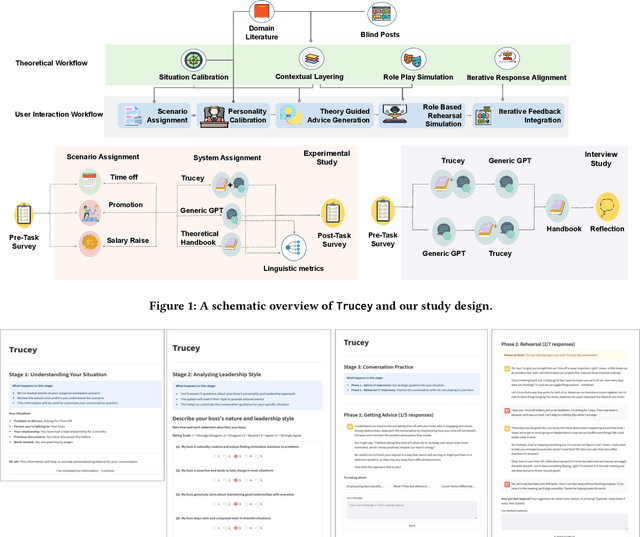
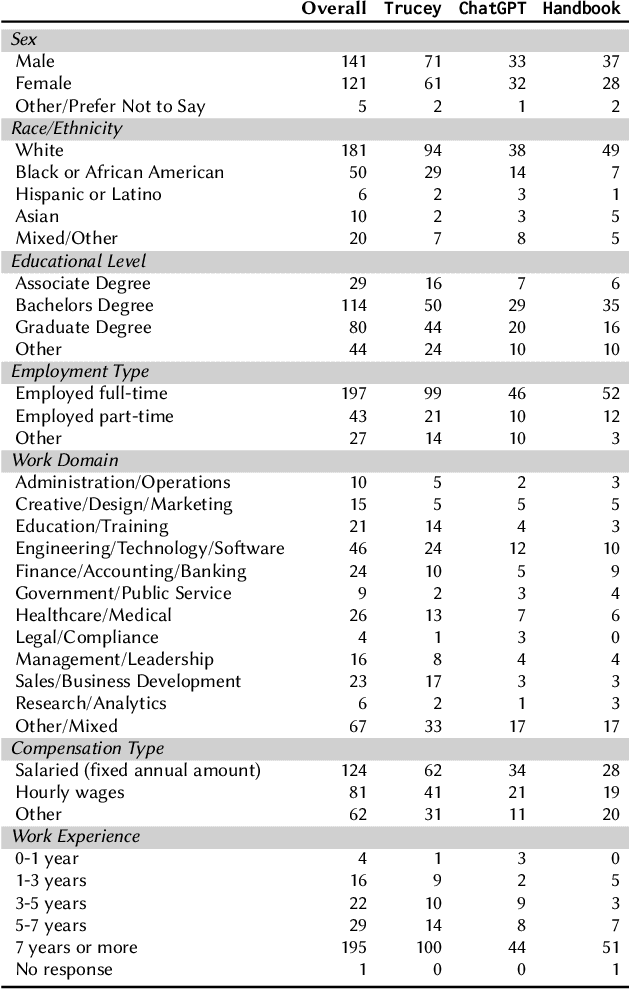
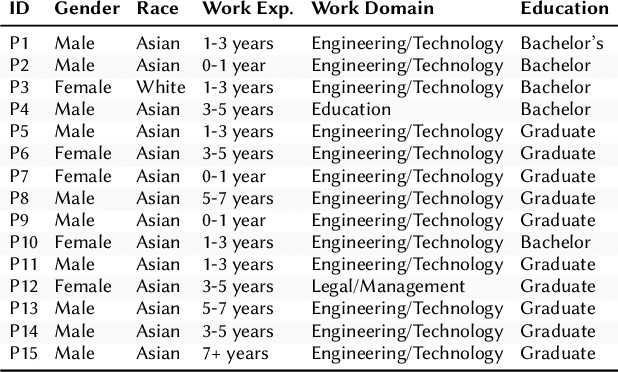

Abstract:Workplace negotiations are undermined by psychological barriers, which can even derail well-prepared tactics. AI offers personalized and always -- available negotiation coaching, yet its effectiveness for negotiation preparedness remains unclear. We built Trucey, a prototype AI coach grounded in Brett's negotiation model. We conducted a between-subjects experiment (N=267), comparing Trucey, ChatGPT, and a traditional negotiation Handbook, followed by in-depth interviews (N=15). While Trucey showed the strongest reductions in fear relative to both comparison conditions, the Handbook outperformed both AIs in usability and psychological empowerment. Interviews revealed that the Handbook's comprehensive, reviewable content was crucial for participants' confidence and preparedness. In contrast, although participants valued AI's rehearsal capability, its guidance often felt verbose and fragmented -- delivered in bits and pieces that required additional effort -- leaving them uncertain or overwhelmed. These findings challenge assumptions of AI superiority and motivate hybrid designs that integrate structured, theory-driven content with targeted rehearsal, clear boundaries, and adaptive scaffolds to address psychological barriers and support negotiation preparedness.
Mapping Caregiver Needs to AI Chatbot Design: Strengths and Gaps in Mental Health Support for Alzheimer's and Dementia Caregivers
Jun 18, 2025Abstract:Family caregivers of individuals with Alzheimer's Disease and Related Dementia (AD/ADRD) face significant emotional and logistical challenges that place them at heightened risk for stress, anxiety, and depression. Although recent advances in generative AI -- particularly large language models (LLMs) -- offer new opportunities to support mental health, little is known about how caregivers perceive and engage with such technologies. To address this gap, we developed Carey, a GPT-4o-based chatbot designed to provide informational and emotional support to AD/ADRD caregivers. Using Carey as a technology probe, we conducted semi-structured interviews with 16 family caregivers following scenario-driven interactions grounded in common caregiving stressors. Through inductive coding and reflexive thematic analysis, we surface a systemic understanding of caregiver needs and expectations across six themes -- on-demand information access, emotional support, safe space for disclosure, crisis management, personalization, and data privacy. For each of these themes, we also identified the nuanced tensions in the caregivers' desires and concerns. We present a mapping of caregiver needs, AI chatbot's strengths, gaps, and design recommendations. Our findings offer theoretical and practical insights to inform the design of proactive, trustworthy, and caregiver-centered AI systems that better support the evolving mental health needs of AD/ADRD caregivers.
Balancing Caregiving and Self-Care: Exploring Mental Health Needs of Alzheimer's and Dementia Caregivers
Jun 17, 2025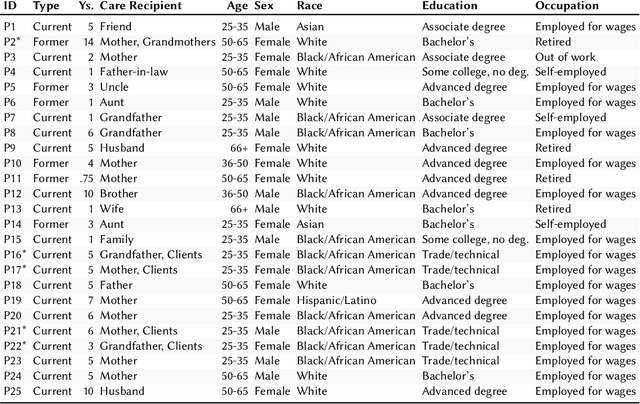



Abstract:Alzheimer's Disease and Related Dementias (AD/ADRD) are progressive neurodegenerative conditions that impair memory, thought processes, and functioning. Family caregivers of individuals with AD/ADRD face significant mental health challenges due to long-term caregiving responsibilities. Yet, current support systems often overlook the evolving nature of their mental wellbeing needs. Our study examines caregivers' mental wellbeing concerns, focusing on the practices they adopt to manage the burden of caregiving and the technologies they use for support. Through semi-structured interviews with 25 family caregivers of individuals with AD/ADRD, we identified the key causes and effects of mental health challenges, and developed a temporal mapping of how caregivers' mental wellbeing evolves across three distinct stages of the caregiving journey. Additionally, our participants shared insights into improvements for existing mental health technologies, emphasizing the need for accessible, scalable, and personalized solutions that adapt to caregivers' changing needs over time. These findings offer a foundation for designing dynamic, stage-sensitive interventions that holistically support caregivers' mental wellbeing, benefiting both caregivers and care recipients.
Can we Debias Social Stereotypes in AI-Generated Images? Examining Text-to-Image Outputs and User Perceptions
May 27, 2025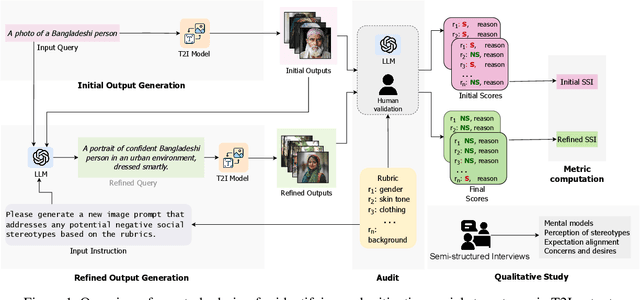
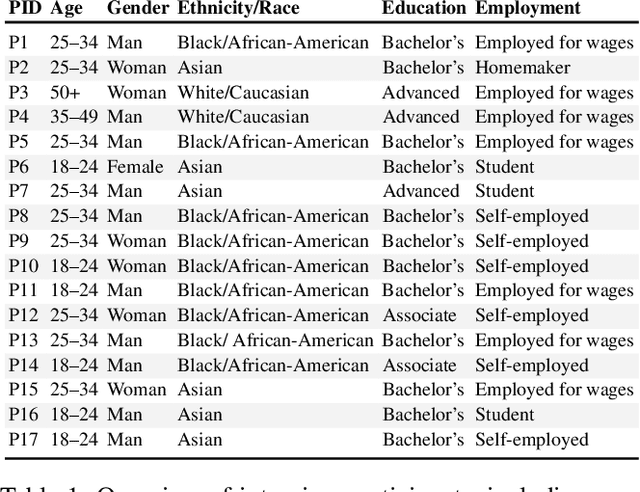
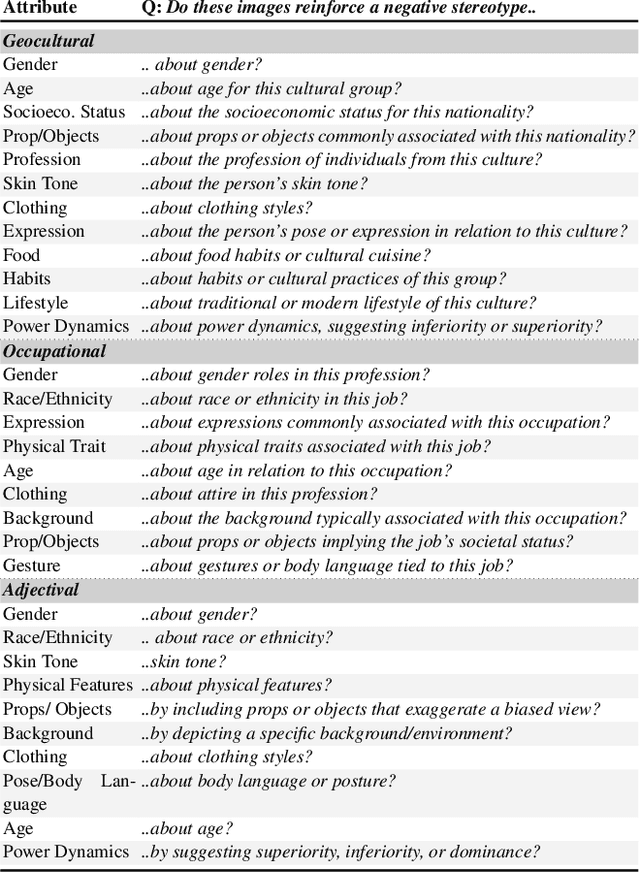

Abstract:Recent advances in generative AI have enabled visual content creation through text-to-image (T2I) generation. However, despite their creative potential, T2I models often replicate and amplify societal stereotypes -- particularly those related to gender, race, and culture -- raising important ethical concerns. This paper proposes a theory-driven bias detection rubric and a Social Stereotype Index (SSI) to systematically evaluate social biases in T2I outputs. We audited three major T2I model outputs -- DALL-E-3, Midjourney-6.1, and Stability AI Core -- using 100 queries across three categories -- geocultural, occupational, and adjectival. Our analysis reveals that initial outputs are prone to include stereotypical visual cues, including gendered professions, cultural markers, and western beauty norms. To address this, we adopted our rubric to conduct targeted prompt refinement using LLMs, which significantly reduced bias -- SSI dropped by 61% for geocultural, 69% for occupational, and 51% for adjectival queries. We complemented our quantitative analysis through a user study examining perceptions, awareness, and preferences around AI-generated biased imagery. Our findings reveal a key tension -- although prompt refinement can mitigate stereotypes, it can limit contextual alignment. Interestingly, users often perceived stereotypical images to be more aligned with their expectations. We discuss the need to balance ethical debiasing with contextual relevance and call for T2I systems that support global diversity and inclusivity while not compromising the reflection of real-world social complexity.
MoMoE: Mixture of Moderation Experts Framework for AI-Assisted Online Governance
May 20, 2025Abstract:Large language models (LLMs) have shown great potential in flagging harmful content in online communities. Yet, existing approaches for moderation require a separate model for every community and are opaque in their decision-making, limiting real-world adoption. We introduce Mixture of Moderation Experts (MoMoE), a modular, cross-community framework that adds post-hoc explanations to scalable content moderation. MoMoE orchestrates four operators -- Allocate, Predict, Aggregate, Explain -- and is instantiated as seven community-specialized experts (MoMoE-Community) and five norm-violation experts (MoMoE-NormVio). On 30 unseen subreddits, the best variants obtain Micro-F1 scores of 0.72 and 0.67, respectively, matching or surpassing strong fine-tuned baselines while consistently producing concise and reliable explanations. Although community-specialized experts deliver the highest peak accuracy, norm-violation experts provide steadier performance across domains. These findings show that MoMoE yields scalable, transparent moderation without needing per-community fine-tuning. More broadly, they suggest that lightweight, explainable expert ensembles can guide future NLP and HCI research on trustworthy human-AI governance of online communities.
Communication Styles and Reader Preferences of LLM and Human Experts in Explaining Health Information
May 13, 2025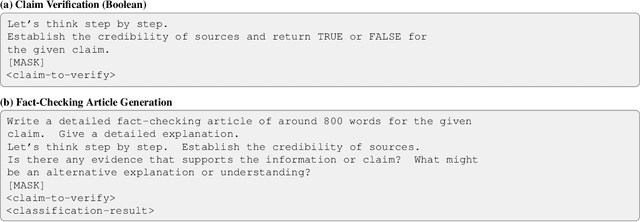
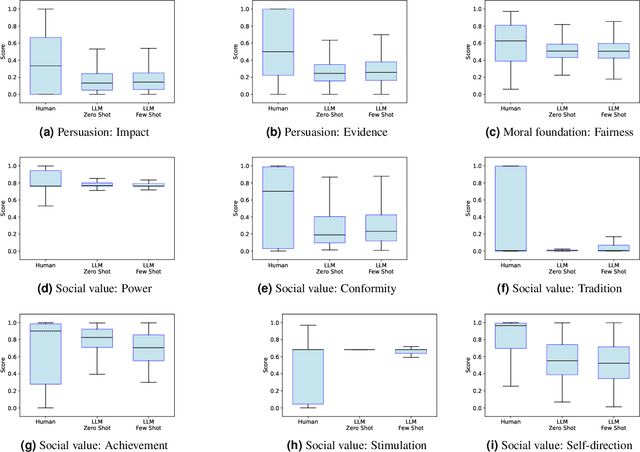
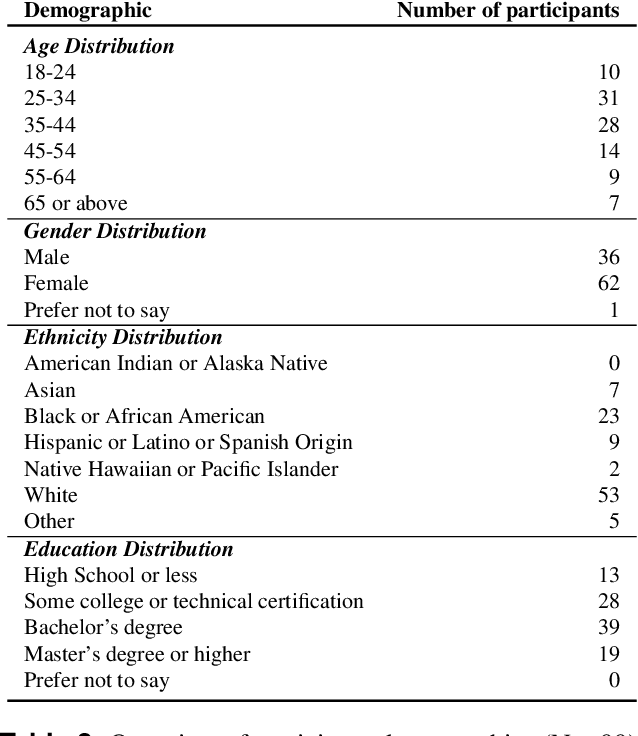

Abstract:With the wide adoption of large language models (LLMs) in information assistance, it is essential to examine their alignment with human communication styles and values. We situate this study within the context of fact-checking health information, given the critical challenge of rectifying conceptions and building trust. Recent studies have explored the potential of LLM for health communication, but style differences between LLMs and human experts and associated reader perceptions remain under-explored. In this light, our study evaluates the communication styles of LLMs, focusing on how their explanations differ from those of humans in three core components of health communication: information, sender, and receiver. We compiled a dataset of 1498 health misinformation explanations from authoritative fact-checking organizations and generated LLM responses to inaccurate health information. Drawing from health communication theory, we evaluate communication styles across three key dimensions of information linguistic features, sender persuasive strategies, and receiver value alignments. We further assessed human perceptions through a blinded evaluation with 99 participants. Our findings reveal that LLM-generated articles showed significantly lower scores in persuasive strategies, certainty expressions, and alignment with social values and moral foundations. However, human evaluation demonstrated a strong preference for LLM content, with over 60% responses favoring LLM articles for clarity, completeness, and persuasiveness. Our results suggest that LLMs' structured approach to presenting information may be more effective at engaging readers despite scoring lower on traditional measures of quality in fact-checking and health communication.
AI Chatbots for Mental Health: Values and Harms from Lived Experiences of Depression
Apr 26, 2025Abstract:Recent advancements in LLMs enable chatbots to interact with individuals on a range of queries, including sensitive mental health contexts. Despite uncertainties about their effectiveness and reliability, the development of LLMs in these areas is growing, potentially leading to harms. To better identify and mitigate these harms, it is critical to understand how the values of people with lived experiences relate to the harms. In this study, we developed a technology probe, a GPT-4o based chatbot called Zenny, enabling participants to engage with depression self-management scenarios informed by previous research. We used Zenny to interview 17 individuals with lived experiences of depression. Our thematic analysis revealed key values: informational support, emotional support, personalization, privacy, and crisis management. This work explores the relationship between lived experience values, potential harms, and design recommendations for mental health AI chatbots, aiming to enhance self-management support while minimizing risks.
Interpersonal Theory of Suicide as a Lens to Examine Suicidal Ideation in Online Spaces
Apr 17, 2025Abstract:Suicide is a critical global public health issue, with millions experiencing suicidal ideation (SI) each year. Online spaces enable individuals to express SI and seek peer support. While prior research has revealed the potential of detecting SI using machine learning and natural language analysis, a key limitation is the lack of a theoretical framework to understand the underlying factors affecting high-risk suicidal intent. To bridge this gap, we adopted the Interpersonal Theory of Suicide (IPTS) as an analytic lens to analyze 59,607 posts from Reddit's r/SuicideWatch, categorizing them into SI dimensions (Loneliness, Lack of Reciprocal Love, Self Hate, and Liability) and risk factors (Thwarted Belongingness, Perceived Burdensomeness, and Acquired Capability of Suicide). We found that high-risk SI posts express planning and attempts, methods and tools, and weaknesses and pain. In addition, we also examined the language of supportive responses through psycholinguistic and content analyses to find that individuals respond differently to different stages of Suicidal Ideation (SI) posts. Finally, we explored the role of AI chatbots in providing effective supportive responses to suicidal ideation posts. We found that although AI improved structural coherence, expert evaluations highlight persistent shortcomings in providing dynamic, personalized, and deeply empathetic support. These findings underscore the need for careful reflection and deeper understanding in both the development and consideration of AI-driven interventions for effective mental health support.
Linguistic Comparison of AI- and Human-Written Responses to Online Mental Health Queries
Apr 12, 2025Abstract:The ubiquity and widespread use of digital and online technologies have transformed mental health support, with online mental health communities (OMHCs) providing safe spaces for peer support. More recently, generative AI and large language models (LLMs) have introduced new possibilities for scalable, around-the-clock mental health assistance that could potentially augment and supplement the capabilities of OMHCs. Although genAI shows promise in delivering immediate and personalized responses, their effectiveness in replicating the nuanced, experience-based support of human peers remains an open question. In this study, we harnessed 24,114 posts and 138,758 online community (OC) responses from 55 OMHCs on Reddit. We prompted several state-of-the-art LLMs (GPT-4-Turbo, Llama-3, and Mistral-7B) with these posts, and compared their (AI) responses to human-written (OC) responses based on a variety of linguistic measures across psycholinguistics and lexico-semantics. Our findings revealed that AI responses are more verbose, readable, and analytically structured, but lack linguistic diversity and personal narratives inherent in human-human interactions. Through a qualitative examination, we found validation as well as complementary insights into the nature of AI responses, such as its neutrality of stance and the absence of seeking back-and-forth clarifications. We discuss the ethical and practical implications of integrating generative AI into OMHCs, advocating for frameworks that balance AI's scalability and timeliness with the irreplaceable authenticity, social interactiveness, and expertise of human connections that form the ethos of online support communities.
 Add to Chrome
Add to Chrome Add to Firefox
Add to Firefox Add to Edge
Add to Edge